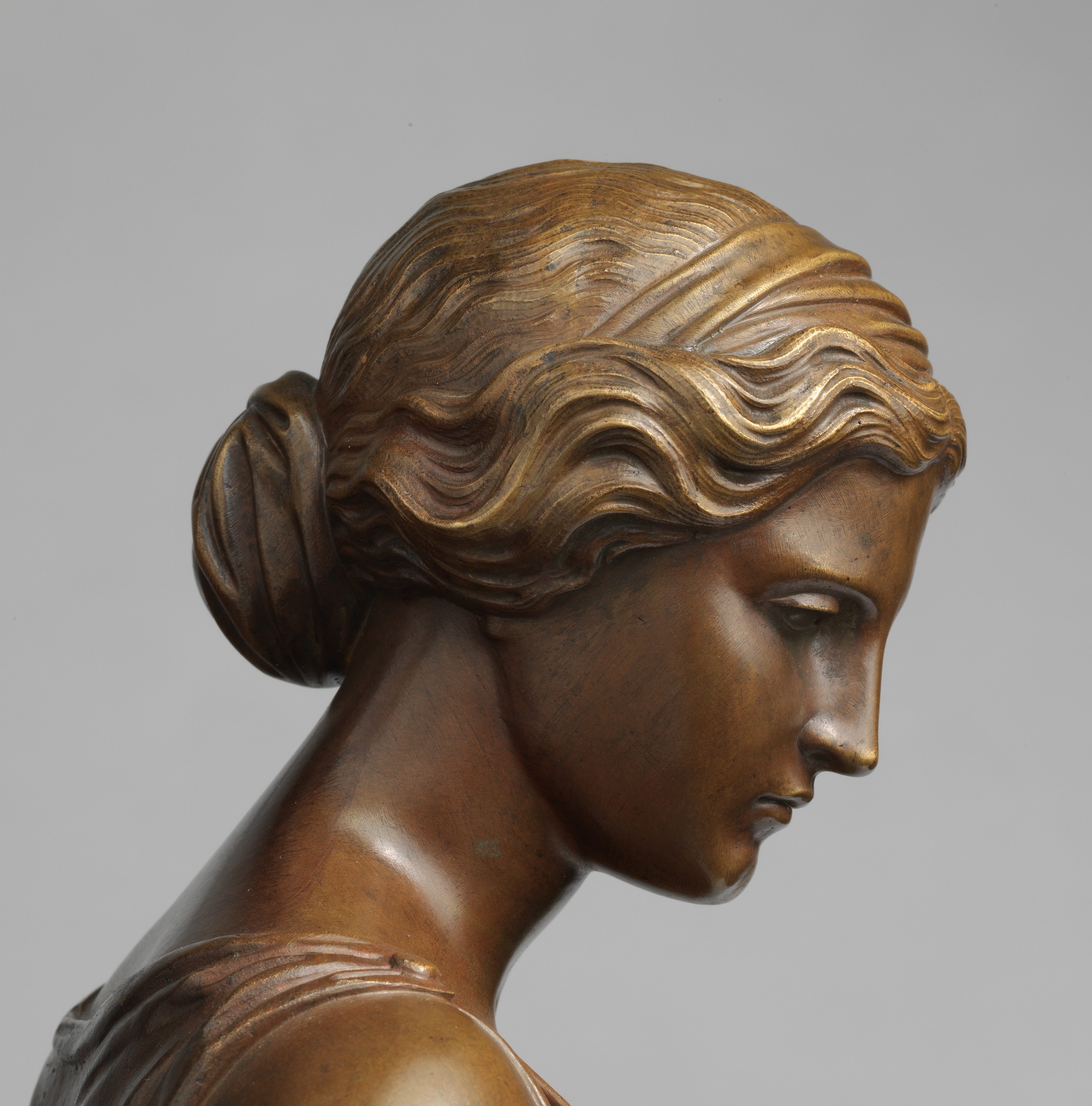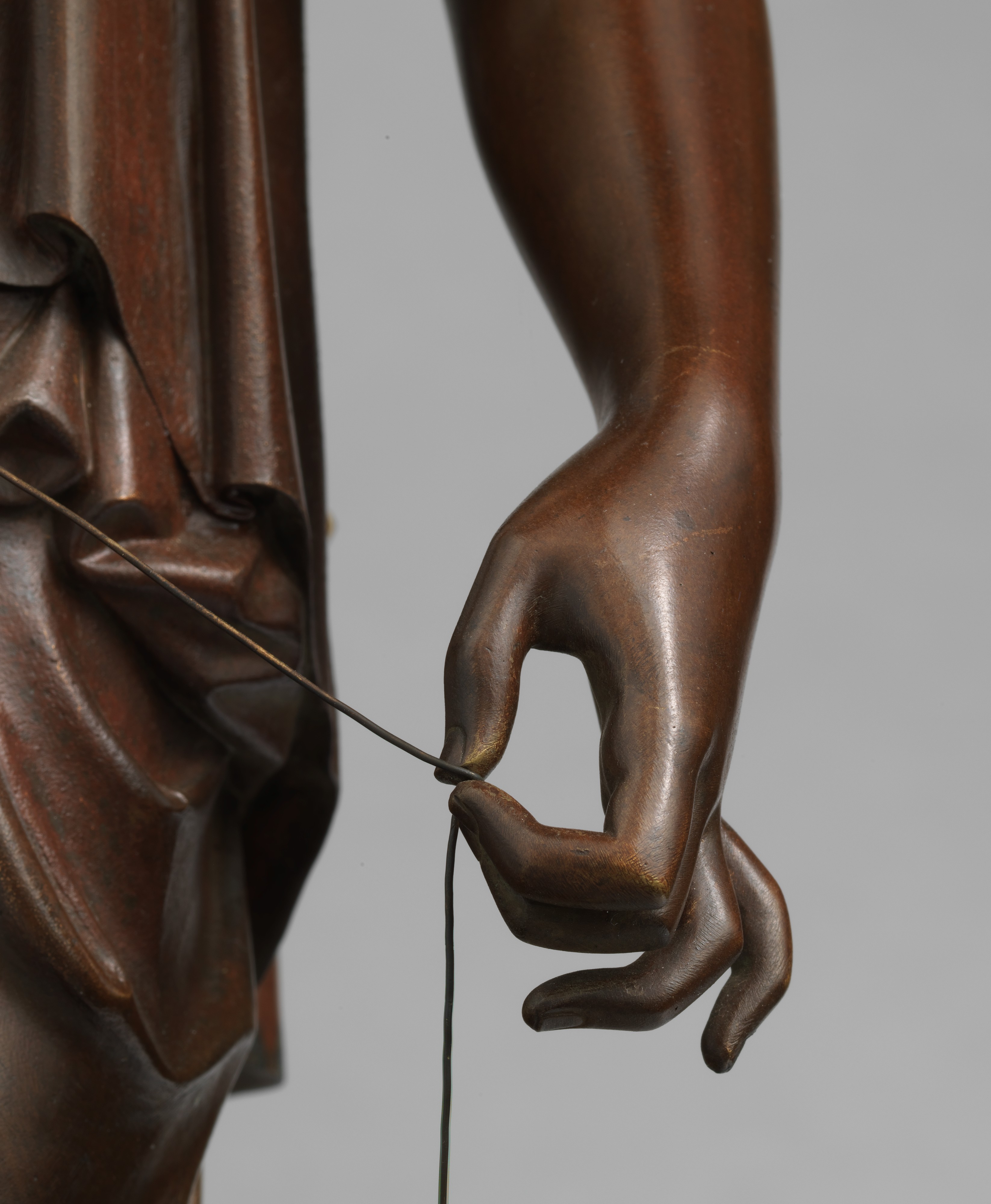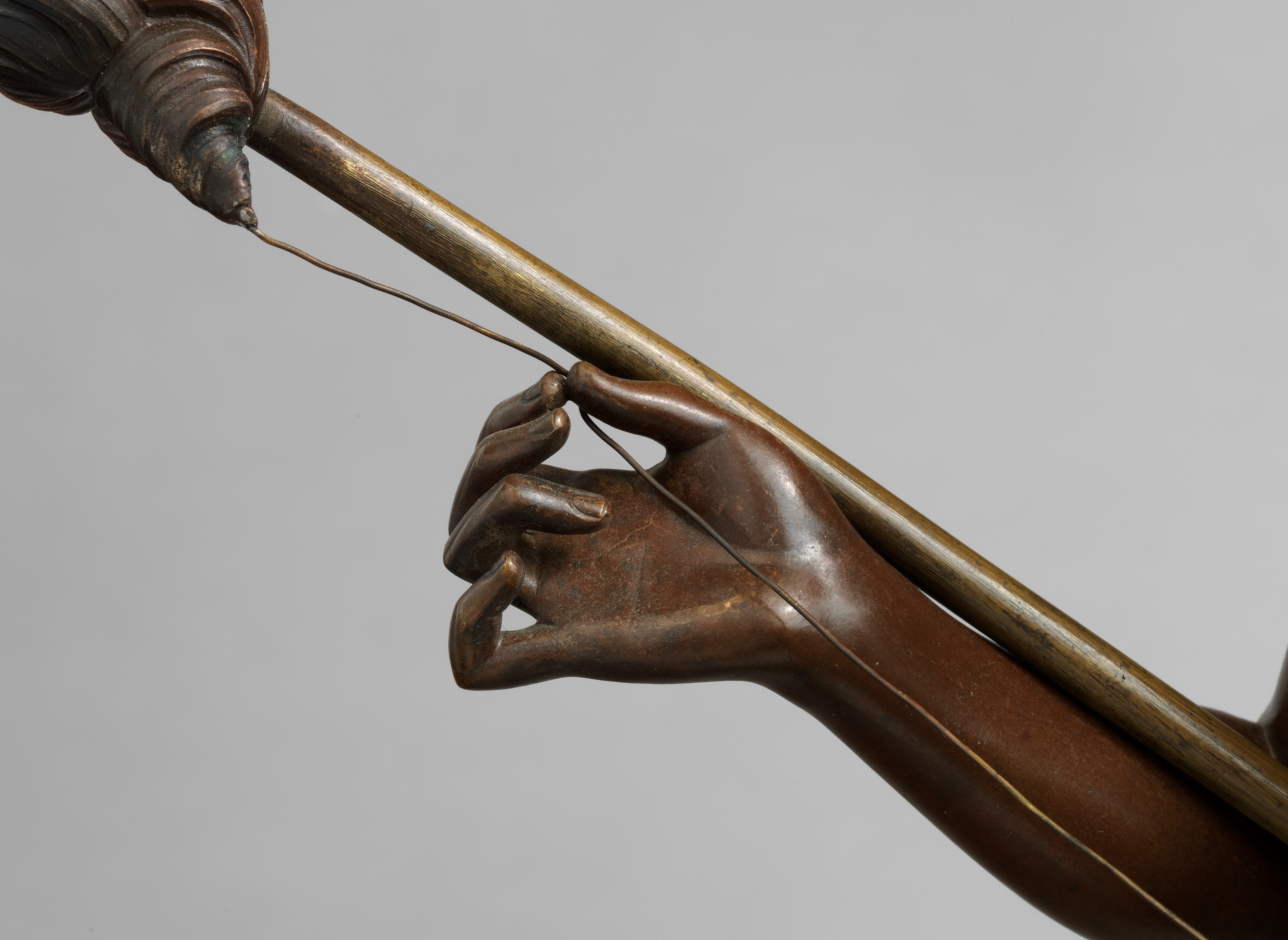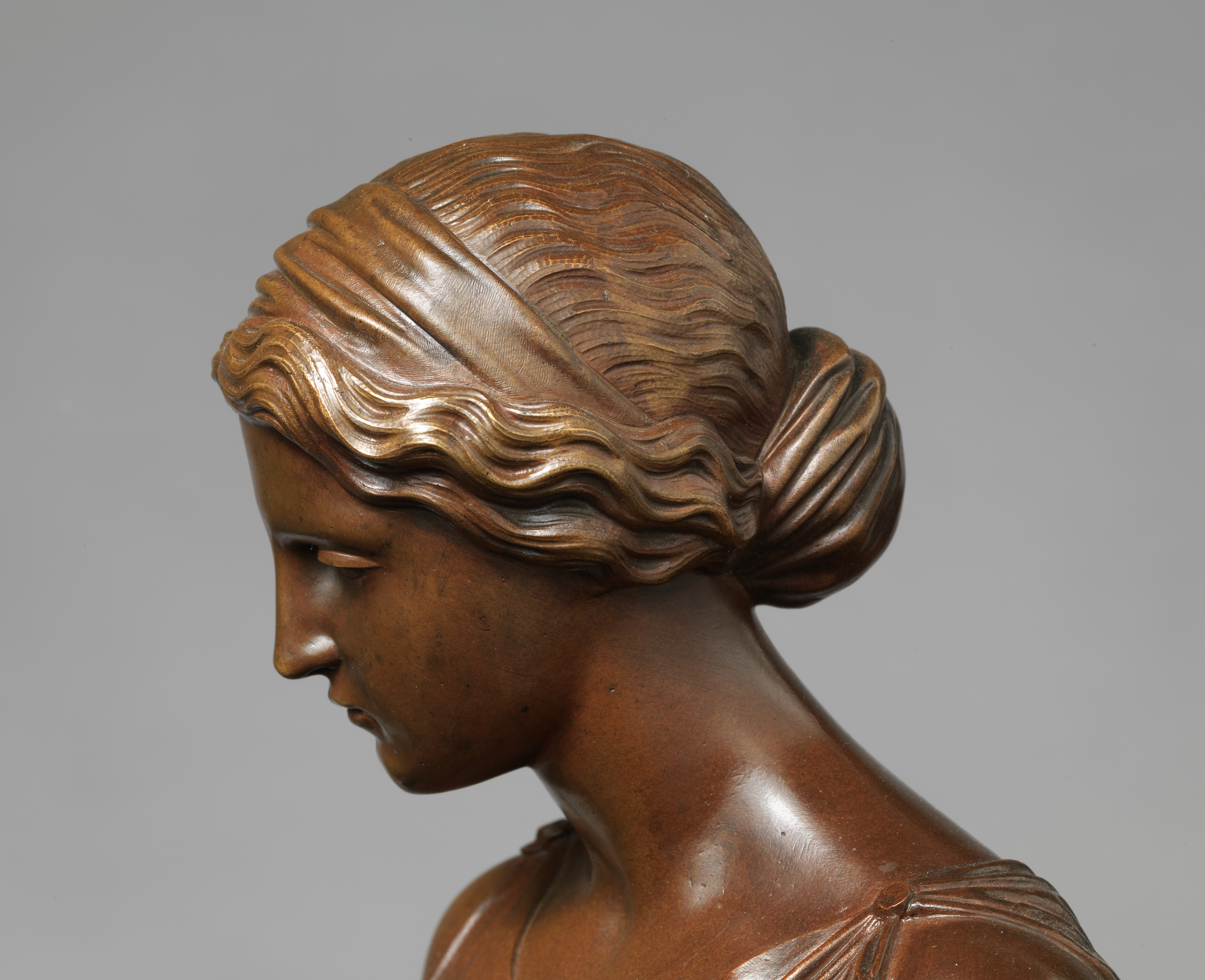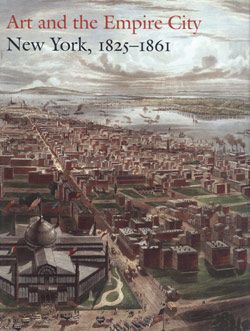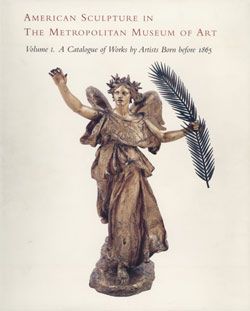Filatrice
Henry Kirke Brown American
In the late 1840s Americans developed the industrial means to produce fine art bronzes, relying on European immigrant labor as well as copper and other metals mined from Indigenous homelands. Sculptures modeled and cast in this country were heralded as affordable and democratic, symbolizing independence from European foundries. In 1849 the American Art-Union began distributing statuettes to its subscribers in an annual lottery, increasing public awareness of bronze and situating it within a mass market. Twenty examples of Filatrice (Italian for "spinner") were commissioned for that purpose and cast in Brown’s rudimentary foundry in his Brooklyn studio.
This image cannot be enlarged, viewed at full screen, or downloaded.
This artwork is meant to be viewed from right to left. Scroll left to view more.


